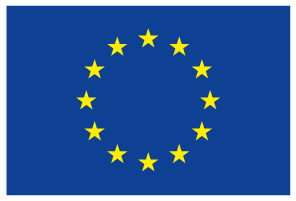Italy
2017
- Type : Project
- Size : Regional
- Area : Residential
Environmental benefit
Geothermal heat sources for the DH System of Ferrara
Share
Italy
2017
- Type : Project
- Size : Regional
- Area : Residential
Environmental benefit
Discover this use case online
The district heating system of the municipality of Ferrara supplies heat for space heating and domestic hot water in a rather large area of the city. HERA, a local district heating company, has planned a project, called “Polo Energie Rinnovabili”, developing the existing scheme, system increasing the supplied volume up to 9.000.000 m3 of users, covering at least the 91% of total production with renewable energy or recovery from industrial processes.
Recent geo – structural and geothermal investigations carried out by HERA Group in collaboration with “Consorzio Ferrara Ricerche” (University of Ferrara and Geological Service of Emilia – Romagna Region), confirmed the presence of new particularly interesting geothermal reservoirs in the eastern part of the City.
Three hydrothermal systems have actually been identified: G1 (Early Pliocene Formations), G2 (Late Messinian Formations) and G3 (Early Jurassic Formations). Each reservoir can be considered hydraulically separated from the others by a impermeable layer that prevents significant
leakages.
While the system G1 does not show big thermal anomalies, the hydrothermal system G2 is characterized by an average temperature of 45°C-60°C, and the G3 shows temperature between 85°C and 95°C.
Driller data collected during oil and gas detections in the Po area, indicate a geothermal gradient of 1°C/100 m; however, the gradient is not linear and the studies carried out by HERA suggest gradients from 2°C to 6,5°C/100 m in the deepest reservoir G3. This one, therefore, has turned out to be the most appropriate area for a district heating exploitation.
The development project, in addition to geothermal source, shows other innovative solutions such as Solar Thermal Plant, 1 MW installed power, as primary thermal energy source (base load). The project will ensure about 1.000 MWht total annual thermal production by a 1.220 m2 surface of solar panels: due to the great extension of the area, panels will be installed on the technological buildings embankments, consistently designed to reduce the plant environmental and architectural impact and allow a fair integration with the surrounding landscape.
This application will represent the first example in Italy of Solar Thermal applied to District Heating, which has already well started up in Northern Europe, where SDH plants exist since beginning of the 80’s at competitive costs.
Furthermore an ORC (Organic Rankine Cycle) turbine will be installed. The geothermal source will supply thermal energy to the turbine and produce electricity while D.H. has been turned off. The ORC will produce 1 MW net active electric power.
 R-ACES has received funding from the European Union’s Horizon 2020 research and innovation programme under grant agreement N° 892429
R-ACES has received funding from the European Union’s Horizon 2020 research and innovation programme under grant agreement N° 892429
The district heating system of the municipality of Ferrara supplies heat for space heating and domestic hot water in a rather large area of the city. HERA, a local district heating company, has planned a project, called “Polo Energie Rinnovabili”, developing the existing scheme, system increasing the supplied volume up to 9.000.000 m3 of users, covering at least the 91% of total production with renewable energy or recovery from industrial processes.
Recent geo – structural and geothermal investigations carried out by HERA Group in collaboration with “Consorzio Ferrara Ricerche” (University of Ferrara and Geological Service of Emilia – Romagna Region), confirmed the presence of new particularly interesting geothermal reservoirs in the eastern part of the City.
Three hydrothermal systems have actually been identified: G1 (Early Pliocene Formations), G2 (Late Messinian Formations) and G3 (Early Jurassic Formations). Each reservoir can be considered hydraulically separated from the others by a impermeable layer that prevents significant
leakages.
While the system G1 does not show big thermal anomalies, the hydrothermal system G2 is characterized by an average temperature of 45°C-60°C, and the G3 shows temperature between 85°C and 95°C.
Driller data collected during oil and gas detections in the Po area, indicate a geothermal gradient of 1°C/100 m; however, the gradient is not linear and the studies carried out by HERA suggest gradients from 2°C to 6,5°C/100 m in the deepest reservoir G3. This one, therefore, has turned out to be the most appropriate area for a district heating exploitation.
The development project, in addition to geothermal source, shows other innovative solutions such as Solar Thermal Plant, 1 MW installed power, as primary thermal energy source (base load). The project will ensure about 1.000 MWht total annual thermal production by a 1.220 m2 surface of solar panels: due to the great extension of the area, panels will be installed on the technological buildings embankments, consistently designed to reduce the plant environmental and architectural impact and allow a fair integration with the surrounding landscape.
This application will represent the first example in Italy of Solar Thermal applied to District Heating, which has already well started up in Northern Europe, where SDH plants exist since beginning of the 80’s at competitive costs.
Furthermore an ORC (Organic Rankine Cycle) turbine will be installed. The geothermal source will supply thermal energy to the turbine and produce electricity while D.H. has been turned off. The ORC will produce 1 MW net active electric power.
